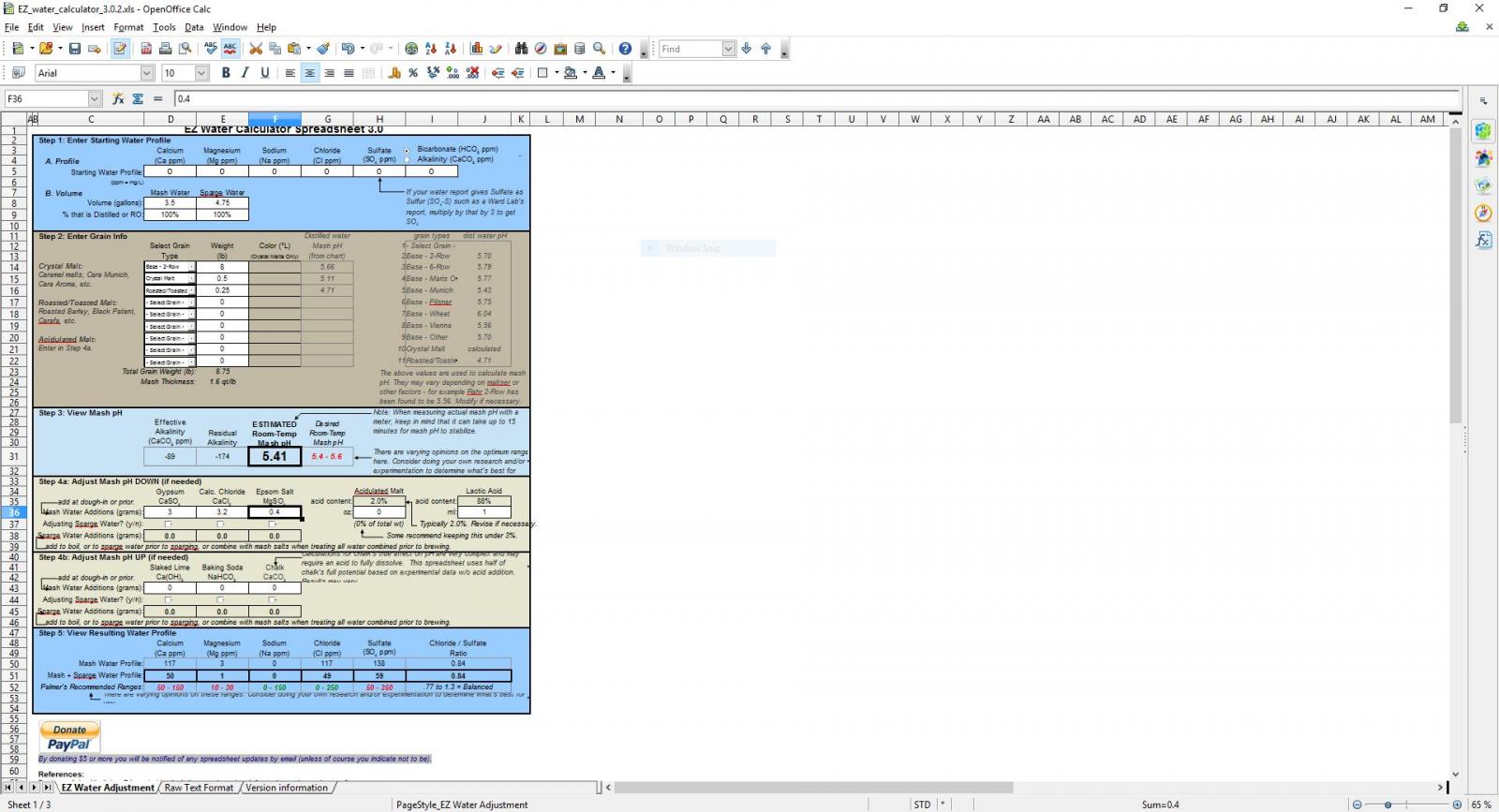I am trying to wrap my head around adjusting my water for mashing.
I will be using all RO and adding salts to the mash only no sparge additions. This is what I have come up with for a cream ale style brew.
How much of an impact will it have if the Chloride/sulfate ratio is this low ?
Any feedback is greatly appreciated.

I will be using all RO and adding salts to the mash only no sparge additions. This is what I have come up with for a cream ale style brew.
How much of an impact will it have if the Chloride/sulfate ratio is this low ?
Any feedback is greatly appreciated.




























![Craft A Brew - Safale S-04 Dry Yeast - Fermentis - English Ale Dry Yeast - For English and American Ales and Hard Apple Ciders - Ingredients for Home Brewing - Beer Making Supplies - [1 Pack]](https://m.media-amazon.com/images/I/41fVGNh6JfL._SL500_.jpg)































